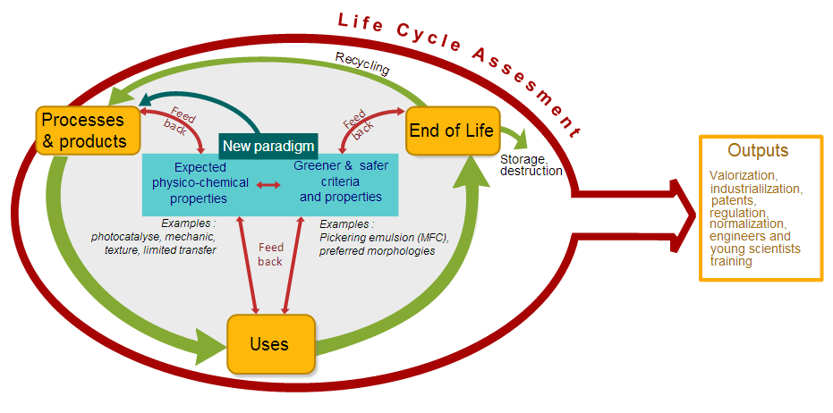The “safer by design” approach
The risks to human health and the environment depend on the toxicity and the exposure. It’s possible to limit the risks by acting from the design of the product on:
- the nanoparticles: realize a coating to increase the size without losing any properties, improve the desired properties by playing with the matrix, insert nanoparticles on bigger particles to avoid a release,…
- the uses: restrict the use of a product to specific scenarios in such a way as to reduce the potential release,
- the matrix: improve the organic matrix resistance thanks to the polymer properties, the binder to obtain a better affinity between the matrix and the particles.
Several European projects such as SUN (“Sustainable Nanotechnologies”), NANoREGII (“Developmentand implementation of Grouping and Safe-by-Design approaches within regulatory frameworks”) or the SERENADE labex (“Safe(r) ecodesign research and education applied to nanomaterial development”) care about this approach.

Toward new generation of nanomaterials [https://serenade.cerege.fr].


